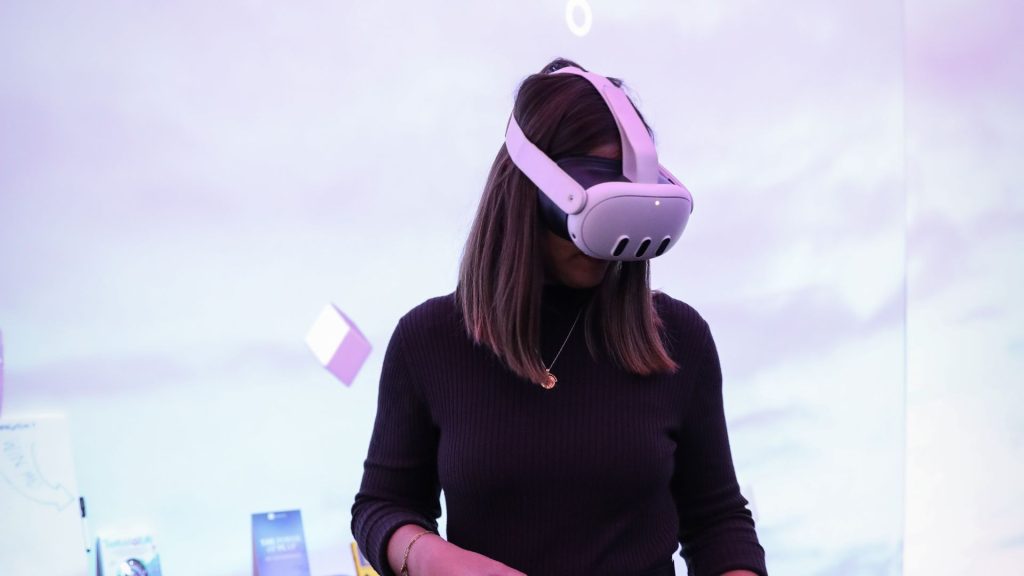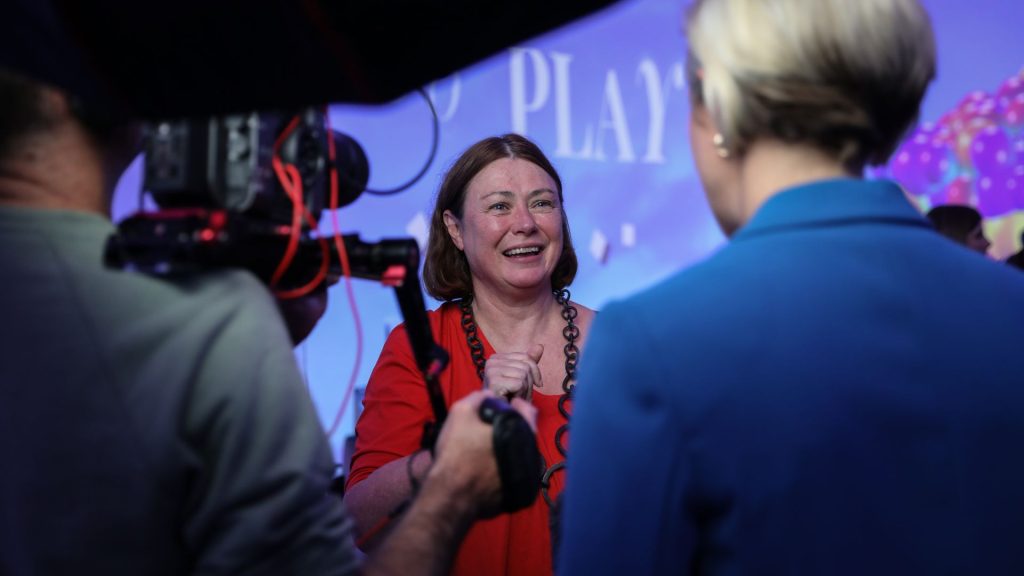The Power of Play was the topic explored at Broadsword’s latest B.Inspired event, which brought together event professionals, creative technologists, and corporate leaders to explore how gamification, immersive technology, and playful elements can make events more impactful, interactive, and memorable.
The panel, facilitated by Broadsword, was made up of Andrew Dobson, head of creative technology at Merlin Magic Making; Paul Haynes, senior global graduate development at HSBC; and Janine Chandler, founder of HR Consultancy, Jump in Puddles, and a trained facilitator of LEGO Serious Play method. The discussion was moderated by Broadsword’s strategy director, Matt Green.
The discussion kicked off with a definition of play and an exploration of how play can transform traditional event formats. Panellists shared examples of gamified learning, immersive experiences, and physical play that encouraged collaboration, creativity, and participation. The discussion moved through to the benefits of adopting play within event design to fit the needs of your audience.
The role of physical play through the Serious Lego methodology was put into practice by Janine and how it is a powerful tool to build collaboration and creativity. Taking ideas into a physical build prompts the brain to work in different ways, allowing participants to communicate difficult concepts, explore ideas, and understand other perspectives.
Another way to unlock creativity is to play around with brand perception. Dobson said that true innovation for businesses can often be unlocked when they put aside their existing expectations of brand and instead play with new possibilities to disrupt. At one of Merlin’s flagship attractions — Alton Towers, they came up with the storytelling behind the wooden, volcano themed Wicker Man ride by asking ‘what’s the worst thing you could to do a wooden rollercoaster?’ the answer being, setting it on fire!
In his role working with emerging talent at HSBC, Haynes uses play based strategies to engage and develop global talent in a corporate setting. He shared that when he wants to engage and inspire participants in the graduate programme, he looks to push the boundaries both in technology and gamification.
In a recent project produced by Broadsword, the graduates recreated themselves as digital avatars in a virtual learning environment, working through gamified team challenges. For this generation, the digital setting helps reinforce key messages and is a natural learning environment.
Another benefit to using play as an engagement tool is that participants are learning soft skills such as collaboration and communication throughout. It’s often a more inclusive way to involve audiences where quieter voices can be heard.
And the play wasn’t just part of the discussion. Taking place in the interactive exhibition space at the newly opened Art’otel London Hoxton, Broadsword created activities for attendees to engage in both physical and virtual play, demonstrating the many options available at events. Attendees used Lego to create physical models of their organisations with some surprising results! Meta quest headsets created the opportunity to enjoy a mixed reality experience where attendees could choose from watching the agency’s show reel, exploring its global footprint, or competing in a game to win a Tamagotchi.
Throughout the discussion, several key themes emerged including how to align play based strategies with core event objectives and using technology to enhance the overall experience, as well as how playful elements can improve engagement and learning. It was clear gamification doesn’t just mean fun and games—it’s about creating structured interactions that can boost learning, networking, and participation.
As technology continues to evolve, the role of play in events will become even more significant. Whether through gamified elements, immersive technology, or hands-on activities, event professionals are finding new ways to captivate their audiences.
Check out more photos from the event here












